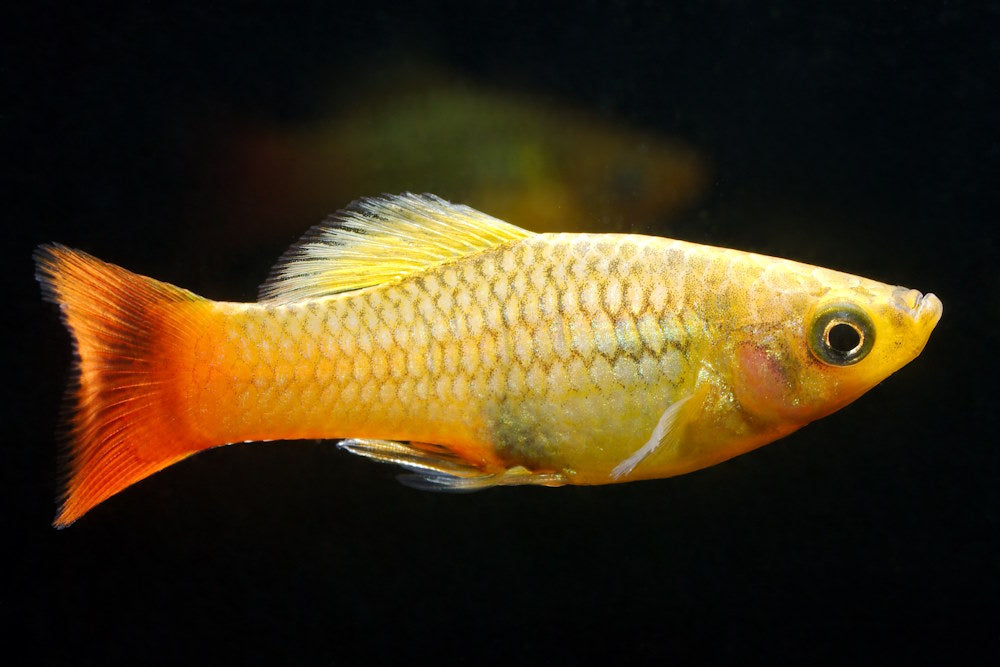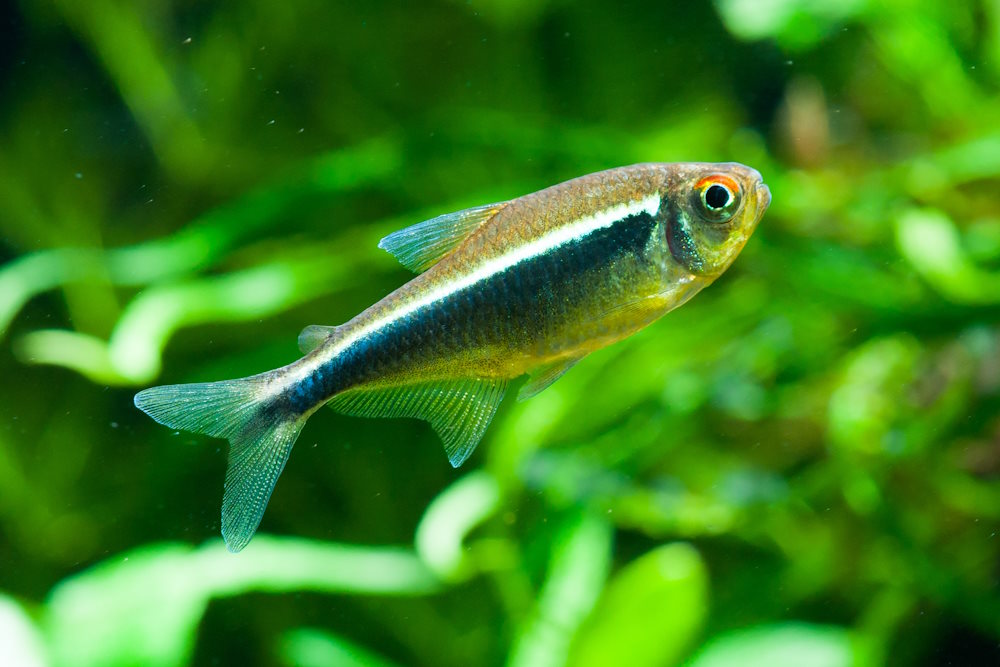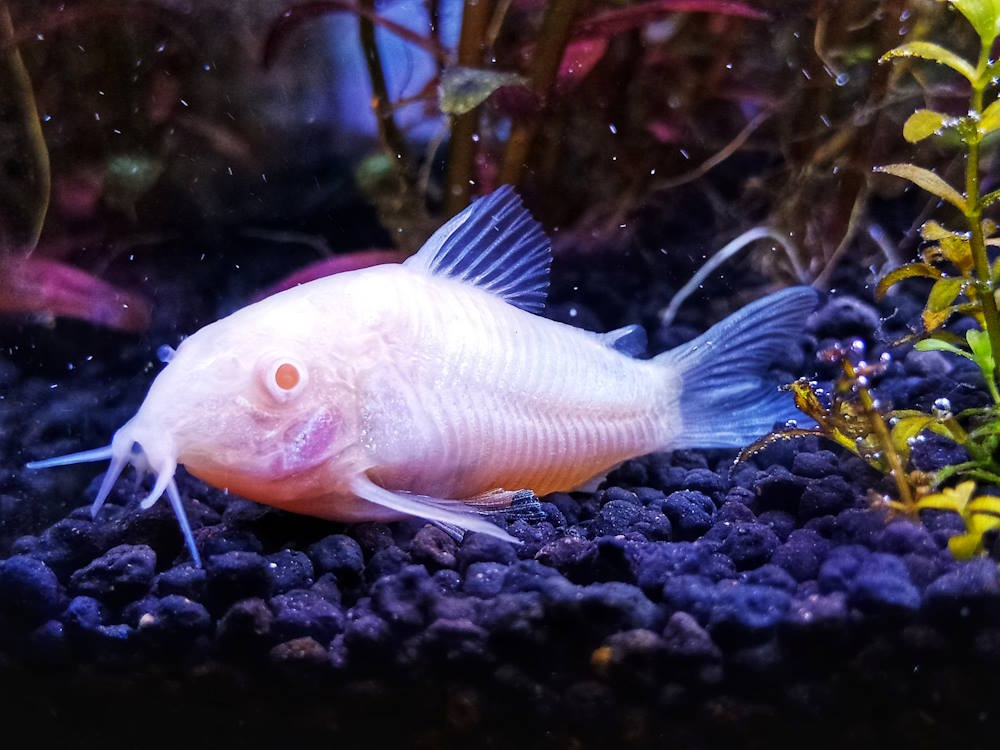Top 5 Aquarium Fish with Crazy Good Value for Beginners
Contrary to popular belief, aquarium fish are not necessarily the cheapest animals at the pet store. By the time you buy the fish tank, heater, filter, and decorations, you may find that you have a limited budget for the actual fish themselves. The last thing you want to do is get a fragile animal that is difficult to care for or won’t last very long. To help you narrow down the huge selection of fish at the pet store, we’ve compiled our top 5 freshwater fish that are not only affordable but also hardy and safe for community tanks. Plus, most of these species either live for a long time or are easy to reproduce so that you don’t constantly have to buy new fish.
1. Sunset Variatus Platy

Xiphophorus variatus
Our founder Cory saw these colorful fish at the pet store, took them home, and had so much fun breeding them. Even to this day, he keeps them in his fish room and constantly recommends them to new and veteran fishkeepers equally. The variatus platy is a very robust species of platy fish that originally comes from Mexico’s plant-filled waterways and now has spread to surrounding countries, as well as Asia. The sunset variety grows to about 2–3 inches (5–8 cm) long with a yellow body that gradually blends into a red-orange tail. This ombre coloration looks jaw-dropping in a planted tank full of greenery.
Spend your money on one male and two to three females for a 15- to 20-gallon aquarium or larger, and they will easily breed to fill the whole tank with bursts of color and energy. Platies, like most livebearers, do prefer harder water, so aim for pH levels of 7–8 and 10° (180 ppm) GH or greater. They also enjoy cooler temperatures, so no heater is needed if your room temperature remains between 65–78°F (18–26°C). They are always ready to eat and will even pick at algae in your tank, so feed them an omnivorous diet with both protein and fibrous ingredients, such as community fish flakes, mineral-rich pellets, and freeze-dried brine shrimp. For more details, see our full platy care guide.
2. Black Neon Tetra

Hyphessobrycon herbertaxelrodi
Many beginners are familiar with the neon tetra (Paracheirodon innesi), but we often like to recommend the black neon tetra instead because of their resilience to many fish diseases, confident and active personality, and relatively long lifespan for a tetra. This 1- to 1.5-inch (2.5–3.8 cm) schooling fish has a pearly white stripe paired with a bold black band running down its body and bright red “eyeshadow” above its eye, which looks amazing when swimming across a green background of live aquarium plants.
As a native of Brazil’s Paraguay River basin, they come from more acidic waters, but we’ve found they do just fine in pH levels between 5–8, soft to moderately hard water, and 72–80°F (22–27°C). A group of six can live in a 10-gallon aquarium, but go for 20 gallons or more to increase the size of the school or add tank mates. This deep-bodied tetra goes well with small- to medium-sized community fish, such as hatchetfish, dwarf cichlids, and even angelfish. They tend to hang out in the upper half of the water column, so offer floating or slowly sinking foods such as krill flakes, nano pellets, freeze-dried tubifex worms, and daphnia. Read our article on black neon tetra for more information.
3. Kuhli Loach

Pangio kuhlii
If you want an awesome oddball fish that only costs a few dollars but lives practically forever (i.e., 10 years or more), you have to try the kuhli loach. They look like a 3- to 4-inch (8–10 cm) miniature eel with a yellow-tan body marked by dark brown bands on their back. The little barbels or whiskers around their mouths are excellent for foraging and picking up the smallest crumbs in the aquarium. As a predominantly meat-eating bottom dweller, they love sinking foods like wafers, frozen bloodworms, Repashy gel food, and live worms.
Kuhli loaches are mostly nocturnal, so if you find that other fish are eating all the food before it ever reaches the ground, try feeding them at night when the aquarium lights are off. We have found they do great in a group of 3–6 (or more) of their own kind in a 20-gallon fish tank or bigger. Because they’re so peaceful and stay out of everyone’s way, they pair well with almost any other community tank mates — like tetras, corydoras, livebearers, and even betta fish. They are found in freshwater streams all over Asia and can thrive in a wide range of pH between 5.5–7.5, soft to moderately hard GH, and 74–80°F (23–27°C). Learn more about this fascinating creature in our kuhli loach care guide.
4. Albino Corydoras

Corydoras aeneus (albino version)
Corydoras aeneus is known as the “bronze cory,” but the albino version is much more popular because of its striking, pinkish-white coloration, iridescent cheeks, and rows of bony, armored plates. Unlike some Corydoras species, the albino cory is extremely personable and not afraid of swimming out in the open. Get a school of at least 4–6 of them for a 20-gallon aquarium, and you’ll see them constantly sniffing the ground with their prominent barbels and cleaning the floor of excess food. They also have many other interesting behaviors, such as randomly darting up to the water’s surface to grab a gulp of air or “winking” at you when they are resting on the substrate.
This 2.5- to 2.75-inch (6-7 cm) South American catfish comes from Colombia and Trinidad and can live in pH from 6–8, soft to hard GH, and temperatures between 72–82°F (22–28°C). You can keep them with similar-sized, peaceful tank mates, such as rasboras, otocinclus catfish, and most of the other species on this list. As bottom dwellers, their favorite fish foods include sinking wafers, Repashy gel food, frozen bloodworms, tubifex worms, and other meaty dishes. Feed them well, and they will reward you by spawning eggs all over the tank, paving the way for the next generation of little, pink catfish.
5. Cherry Barb

Puntius titteya — female (above) and male (below)
Most people shy away from barbs because of their boisterous attitudes, but the 2-inch (5 cm) cherry barb is as tame as a tetra. This gorgeous schooling fish from Sri Lanka has some clear sexual dimorphism, so you can easily distinguish between the males and females. The boys have that bright, cherry red body with black-rimmed scales and a somewhat dotted black horizontal line, whereas the girls are tannish with a more solid black line. You can also find albino and long fin (or veiltail) versions at the fish store. Their lovely crimson colors look stunning in a forest of green aquatic plants, which is why they’re so popular with planted tank hobbyists.
A group of six can be kept in a 10-gallon aquarium, but we suggest getting a mix of 1–2 females for every male so that the boys will display their best breeding colors. They tend to swim in the lower half of the water column but are not picky eaters and will swim anywhere to reach their food. Look for products that contain naturally red ingredients (e.g., krill flakes, baby brine shrimp, and Easy Fry and Small Fish Food) to enhance their scarlet hues. Because of seasonal monsoons, they thrive in a broad range of water parameters, including 72–80°F (22–27°C), pH of 6–8, and soft to hard water. To learn more about suitable roommates and how to breed them, see our cherry barb article.
While we do not ship live fish, we have prepared a curated list of online fish retailers that we trust because of their high-quality livestock, premier packaging, and excellent customer service. Check out their latest stock and use our affiliate code aquariumcoop to get an automatic 5% discount.




